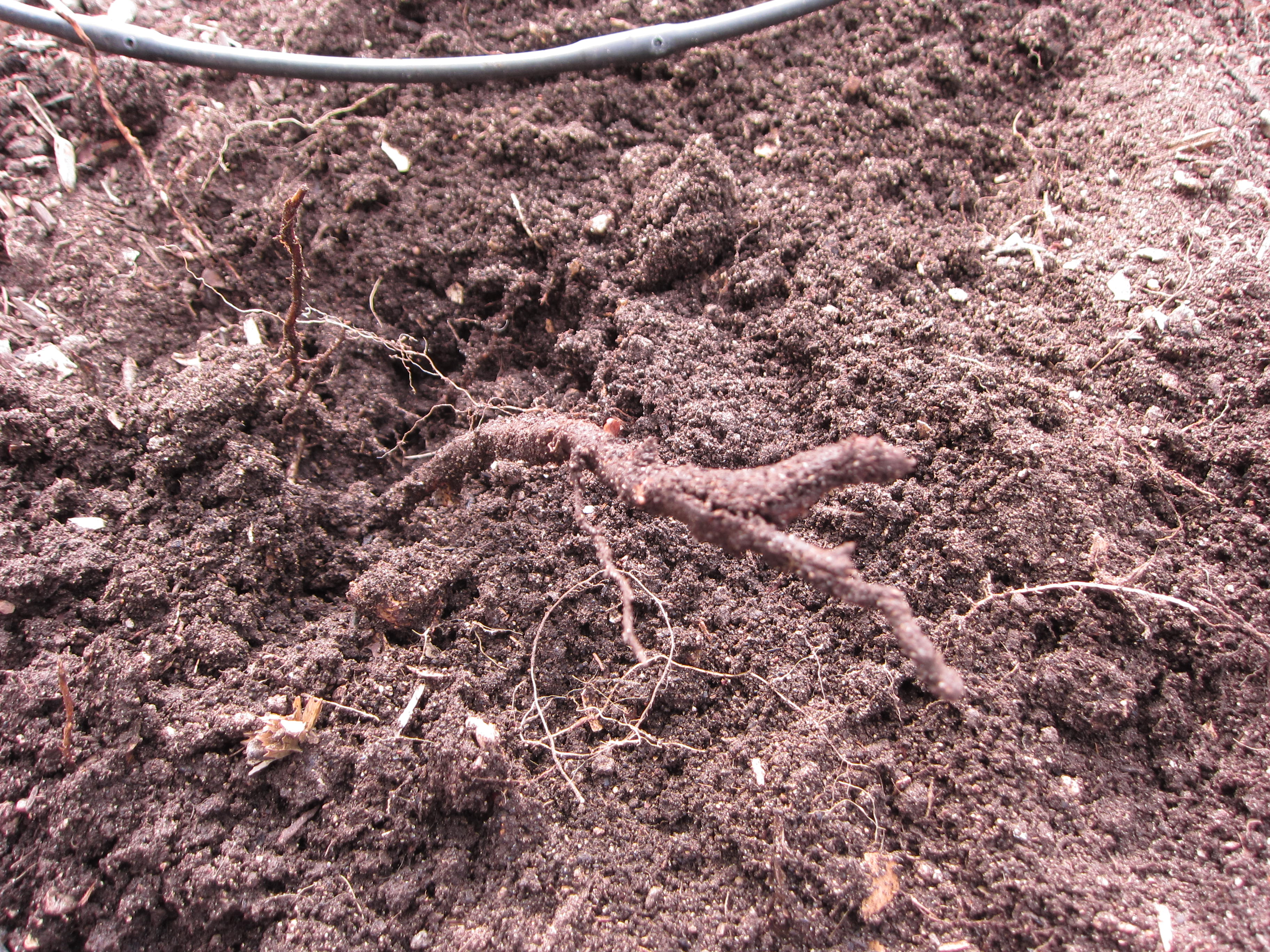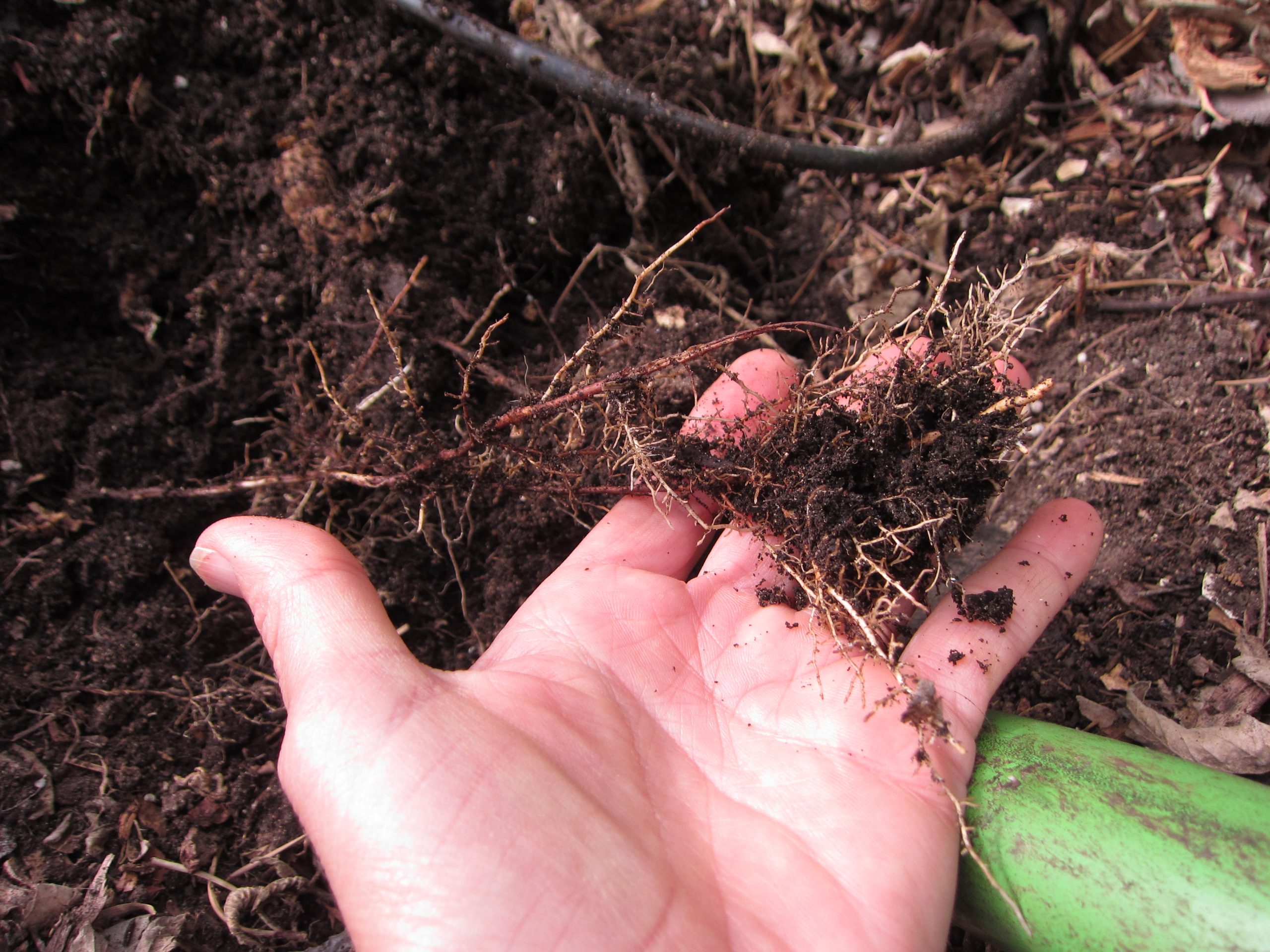Vidya writes in to Ask Gardenerd with a problem we’ve been dealing with for awhile: decreased production in raised beds. She writes, “For five years I have been growing flowers and vegetables in my garden. The first few years, I had amazing yields…Slowly, the plants became shorter and weaker, and this year, I barely had any fruit…I believe that we attracted all of the neighboring trees to send roots into our garden. After scouring the internet for solutions, I found the idea to put vertical metal barriers surrounding the perimeter of the garden into the soil about 3-4 feet deep…This is a rather dramatic solution…Have you heard about people having this problem? Any solutions that you would recommend? Any advice, would be greatly appreciated. Thank you, Vidya.”

Decreased Production
I’m sorry to hear this is happening, Vidya. You are not alone. This year here at Gardenerd, we’ve consulted with probably a dozen clients who have the same problem. Veggie beds receive more water than neighboring trees and shrubs. Eventually those perennials find their way to your garden to drink their fill, and steal nutrients meant for vegetables. Thus, decreased production in subsequent years.
What to Look For
Tree and shrub roots (ficus/privet hedges, I’m talking to you!) weave a fine thatch of root hairs in garden beds. The best way to discover them is with a digging fork. Drive your digging fork into the soil, and rock it back to lift a mound of soil. If it resists, or you see a mess of roots, you most likely have an invasion. Here’s what to look for:
- dark roots, usually brown or reddish
- long roots with fine root hairs at the end (see photo above)
Occasionally you’ll find full-fledged tree roots in your beds, a 1/2″ in diameter or more:

What To Do?
The solution you found on the interwebs is the fool-proof approach to take, and we do recommend it if you can afford it. But it can be expensive and labor intensive. Here’s what we do for clients as a less-expensive fix. It still requires labor, but it’s a starting point for a solution if you’re growing in raised beds. You’ll need:
- Hardware cloth (1/2″ welded wire mesh) the a couple inches wider and longer than your raised bed
- Landscape or weed fabric a couple inches wider and longer than your raised bed
1) Dig out all the soil in one bed, place it on a tarp. You can remove the roots from the soil if they are overwhelming.
2) Put down a layer of landscape fabric inside the raised bed, touching the soil. Staple it into place around the edges of the bed.
3) Put down a layer of hardware cloth on top of the landscape fabric. This will hold the roots in place, preventing them from pushing the landscape fabric up. Staple or screw it into place using washers if needed.
4) Return your soil to the bed.
5) Repeat with the other affected beds.
I know this sounds like a lot of work, but it will save your garden. We’ve successfully done this (and recommended it to DIY gardeners) and it solves the problem every time.
If you are growing in-ground rather than in raised beds, sever the tree roots along the perimeter of your garden and install that root barrier. It will save you years of trouble and frustration in the future.


